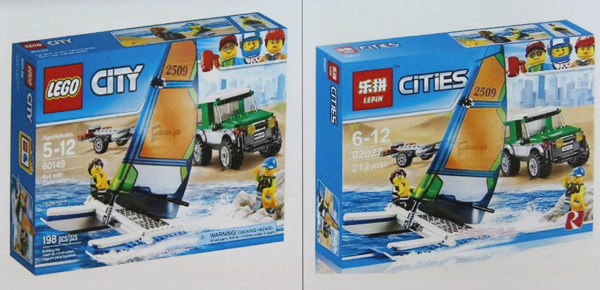LEPIN's infringement of LEGO's copyright

A LEGO set (L) and a LEPIN set with nearly identical packaging. [Photo/WeChat account: shdszy]
Brief Introduction
In October 2018, the Shanghai Public Security Bureau found that a brand called LEPIN had been copying assembly toy designs by Danish toymaker LEGO and selling them on e-commerce platforms such as Taobao and JD.
Investigations show that between 2015 and April 2019, a criminal gang led by Li Haipeng set up a toy manufacturing factory to disassemble, model, copy drawings, and make molds of toys designed by LEGO.
The gang copied a total of 663 toy products, including a "Great Wall of China" set created by LEGO, and sold them both online and offline under the brand name LEPIN.
The Shanghai No 3 Intermediate People's Court held that Li Haipeng and eight others, for the sole purpose of making a profit, copied and distributed LEGO's copyrighted products without the permission of the copyright owner, and the illegal income amounted to 330 million yuan ($51.33 million). The court concluded that these actions constituted copyright infringement.
Li was sentenced to six years in prison and fined 90 million yuan. Eight other defendants were sentenced to fixed-term imprisonment from four years and six months to three years and were also fined accordingly.
Professional Comments
This is a criminal case of copyright infringement resulting from the copying and distribution of LEGO toys. One of the disputed issues in the case was whether the LEGO toys were considered a work of art. According to the Copyright Law, the LEGO building block toys have a unique aesthetic significance, and thus can be protected by law as works of art.
The identification of the types of works involved in this case is a common problem in cases involving copyright infringements of building block toys. This case analyzed the problem by looking at factual evidence, giving it a special significance.


 The 21st Shanghai International Intellectual Property Forum
The 21st Shanghai International Intellectual Property Forum


 WeChat
WeChat Weibo
Weibo